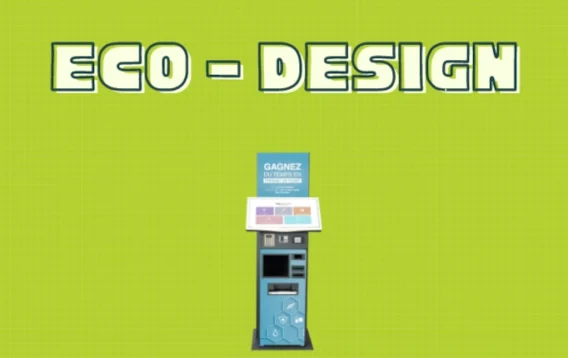Since 1998, ESII initiates an ecological approach to limit its environmental impact respecting the ISO standard 14 001. Since then, we improve constantly our process in all the aspects of our activity: product conception, relationship with other companies, work environment, behavior at work.
Eco-conception
Our products are designed and produced in an approach that considers the entire product lifecycle.
To limit the carbon footprint, we reduce the weight of our products and manufacture them with raw materials purchased from local suppliers. To highlight this local approach, ESII was awarded the « Origine France Garantie » standard for displays and interactive kiosks.
In accordance with the “Imprim’ Vert” standard, the tickets we sell are guaranteed without phenol.
We also recycle and eliminate our obsolete products in partnership with a competent organization for electronic and computer products.
Relationship with the other companies
Together with our customers, we encourage remote communication thanks to our videoconferencing equipment. Furthermore, we give priority to sending e-document rather than paper version.
The printing of our various brochures is done on paper bleached without chlorine and from sustainably managed forests.
Work environment
As part of its environment approach, ESII has opted renewable energies.
Thus, 60% of heating and air conditioning comes from heat pumps in place of oil boilers and electric air conditioners. The different devices are also operated in economy mode with an automatic shut-off at night and at weekends.
Regarding office supplies, ESII is committed to recycling and fighting waste. Ink cartridges, toner, used batteries and paper are collected in containers in the offices and then recycled by specialized organizations.
Awareness of employees
ESII staff is sensitized to avoid waste of the various resources (office supplies, water, electricity…). For example, we promote the « Zero paper » approach, carpooling or public transportation use.
Articles reliés
-

- News
- CSR
The work environment at ESII
-

- News
- ESII
- CSR
Eco-design: The Twana™ XL use case
-

- News
- CSR
Worklife at ESII






